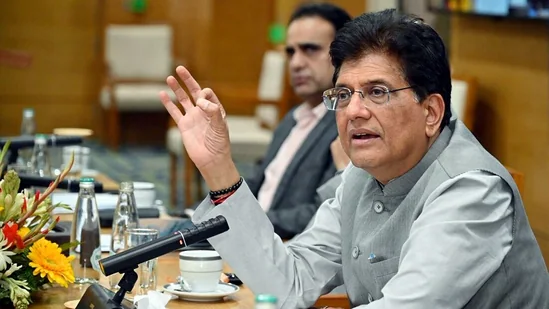India’s Rail Renaissance: 1,000 New Trains and Bullet Train Launch by 2027
- MGMMTeam

- Jul 10
- 4 min read
Indian Railways is poised for a transformational leap forward under the visionary leadership of Union Minister Ashwini Vaishnaw. In a recent announcement, the government unveiled an ambitious plan to introduce 1,000 new trains over the next five years, alongside the much-anticipated launch of India’s first bullet train service by 2027. This comprehensive strategy reflects India’s commitment to modernizing its rail infrastructure, boosting domestic manufacturing, and enhancing passenger experience, while strengthening its position as a global leader in rail technology and operations.

Expanding Capacity to Meet Growing Demand
The addition of 1,000 new trains—approximately 200 annually—represents a significant response to India’s rapidly increasing passenger demand. With a population that continues to grow and urbanize, improving rail connectivity across regions is essential for economic growth and social mobility. This expansion will ease congestion on existing routes and open up new travel corridors, making rail transport more accessible and efficient for millions of Indians.
Such a large-scale augmentation also underscores the government’s vision to bring reliable and frequent train services to underserved areas, thereby promoting regional development and integration. These new trains will range across various service categories, including general coaches as well as modern premium trains, thereby catering to diverse passenger needs.
The Mumbai–Ahmedabad Bullet Train: High-Speed Rail Comes to India
A centerpiece of this rail revolution is the Mumbai–Ahmedabad bullet train project, scheduled to commence operations in 2027. The project, undertaken in collaboration with Japan, introduces Shinkansen high-speed rail technology to India for the first time. The prototype train is expected to be ready by 2026, marking a major milestone in Indian rail history.
Construction has made remarkable progress, with over 300 kilometers of viaducts completed, including complex bridge structures such as the 40-meter girder near Surat. The Daman Ganga bridge, the sixteenth of twenty-one river bridges on the route, has also been finished, showcasing the engineering prowess involved in this venture. Additionally, the integration of advanced signalling technology, such as the European Train Control System (ETCS) Level 2, enhances safety and operational efficiency.
This project is not just about faster trains; it symbolizes India’s ability to assimilate cutting-edge technology while prioritizing local manufacturing. With IIT Madras and IIT Roorkee contributing to various components, and “Make in India” initiatives driving domestic production of critical equipment, the bullet train is a fusion of global expertise and indigenous innovation.
Manufacturing and Infrastructure Growth: A New Industrial Milestone
India’s rail manufacturing sector has witnessed a remarkable surge in recent years. The country now produces over 30,000 wagons and 1,500 locomotives annually, surpassing the combined output of North America and Europe. This manufacturing boom is a testament to the government’s push for self-reliance and technological advancement in heavy industries.
Track expansion efforts are equally impressive. Since 2014, Indian Railways has added more than 35,000 kilometers of new track, with 5,300 kilometers laid in just the past year alone. This rapid growth in infrastructure supports the increasing train fleet and facilitates faster, safer, and more reliable rail services.
Public-private partnerships have played a significant role in financing these developments, with investment figures swelling from ₹25,000 crore to over ₹2.5 lakh crore, reflecting confidence in Indian Railways’ future potential.
Enhancing Passenger Experience and Freight Efficiency
Modernization is not limited to trains and tracks alone. Indian Railways has introduced over 2,000 new general coaches recently, alongside premier services like the Amrit Bharat and Namo Bharat trains, which offer improved comfort, amenities, and punctuality. These advancements have contributed to making rail travel more attractive and affordable, with fares remaining competitive relative to neighboring countries.
On the freight front, Indian Railways currently handles about 29% of the country’s cargo movement. Efforts are underway to increase this share to 35%, aiming to capitalize on rail’s cost-effectiveness and lower environmental impact compared to road transport. Enhancing freight capacity and operational efficiency will bolster supply chains, reduce logistics costs, and support India’s growing industrial economy.
Commitment to Safety and Technological Innovation
Safety has long been a critical concern for Indian Railways, and recent data reflects significant improvements. Derailments have dropped from approximately 170 annually to under 30, while overall railway accidents have decreased by 80%. These gains result from sustained investments in track maintenance, signal upgrades, and staff training.
Advanced signalling systems, such as ETCS Level 2, are being rolled out across key routes, enabling real-time monitoring and automated train control that greatly reduce human error and enhance operational safety. Meanwhile, digital initiatives including the launch of a super-app for passengers are simplifying ticketing and travel planning, further elevating the user experience.
Looking Ahead: India’s Railways on the Global Stage
The vision laid out by the government signals more than just infrastructure growth; it marks India’s emergence as a global rail powerhouse. By integrating high-speed rail technology, expanding manufacturing capacity, and modernizing operations, India is setting new benchmarks in mobility and sustainability.
The bullet train project exemplifies this future-ready approach—bringing faster, safer, and environmentally friendly travel options to millions. Meanwhile, network expansion and freight modernization promise to unlock economic potential across sectors, creating jobs and strengthening the supply chain ecosystem.
This transformation reflects India’s broader ambitions to become a knowledge-driven, self-reliant economy with world-class infrastructure. As the rail network grows and evolves, it will continue to connect people and markets, fueling India’s journey towards prosperity and innovation.
Conclusion
India’s railway sector is undergoing a historic transformation, driven by strategic investments, technological innovation, and a clear focus on passenger and freight needs. The plan to launch 1,000 new trains and the upcoming bullet train service are emblematic of this progress. Together, these initiatives will expand connectivity, enhance safety, boost manufacturing, and place India at the forefront of modern rail systems worldwide. As these developments unfold over the next few years, Indian Railways is set to become a vital engine for the country’s sustainable growth and global integration.
(Sources: OpIndia, Economic Times, Times of India)




Comments